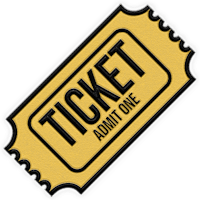Interactive Content Types
The beauty of Studio is that it’s highly flexible in terms of design. However, there are a few types of interactive content that many of our clients build regularly:
Infographics: organized information that blends text or data with visuals
Microsites: a standalone site containing specific information on a topic, product, or campaign theme
eBooks: a digital narrative-driven experience; generally linear in format
Lookbooks: visual-driven catalogs with integrated product details
Infographics
Most people consider infographics first when thinking about which interactive format to try in Studio. Infographics are a good option for many story types but are traditionally used for those with data that needs to be visualized engagingly. This content type is also good for stories with clear beginnings and ends that also need room to expand upon definitions or facts.
Example: Texas Air Race Infographic

Red Bull’s Air Race infographic is an excellent example of how an interactive infographic gives shape to a story. The structure emphasizes the linear story but still allows you to create layers of copy that readers can drill into for more information. Animated buttons throughout the piece work seamlessly with the scrollable content, alerting readers to additional information without disrupting the flow of the main story.
Red Bull’s infographic also utilizes data visualization in a creative way that provides value while still keeping readers engaged with the experience. If you have data that can be visualized in a creative manner an interactive infographic would be a good choice.
Another added benefit of this content type is that it can be used to lead readers to a more long-form piece of content like a white paper or eBook. An infographic used in this way can serve as a teaser, giving readers just a taste of a topic and compelling them to sign up to receive the long-form content via a CTA.
Infographics are good for shorter, linear, and data-driven copy. Paired with animated buttons that drill into specific content and CTAs that lead the viewer to the next content piece.
Microsites
Microsites work best for stories with more content that's easily categorized into subtopics and tied together under an overarching theme. Typically nonlinear, a microsite's path structure is usually dictated by the reader since the navigation allows for easy movement between different sections and pages.
What’s also noteworthy about microsites is that they don’t live on your main website. Your audience will be pointed directly to this site from wherever you choose to promote it whether through email, social or another form of sharing. In this way, many brands use microsites for one-off pieces of content, landing pages, event invites, and more to quickly and easily produce and publish content.
Example: Ceros Template Retail Microsite

An example of a traditional microsite is this template built as a retail microsite. It has a homepage highlighting what’s new and provides a flexible architecture that lets the reader navigate through it.
eBooks
Similar to microsites, eBooks are a great content type when you need the space for a long-form narrative. Because you can make any of these content types interactive using Studio, you can make even a linear-feeling format like an ebook more of a choose-your-own-adventure style piece of content.
eBooks created in Studio should be interactive and often use multimedia to help convey specific portions of the story. If you have a more complex story with a clear structure that can benefit from visuals, videos, animations, and layers of information, then an eBook might be the right fit for your content.
Example: Brand Storytelling + Technology eBook

Our Brand Storytelling + Technology eBook is a good example of how adding interactive elements to long-form content can help create a more engaging experience for readers. The eBook features both a scrolling option, as well as a navigation menu that allows readers to move easily to topics of interest. It features a single story with many different subtopics that play into the overarching theme of how brand storytelling has evolved in the wake of new technology.
eBooks provide a very organized structure, which helps in the editing process—making it easier for you to decide which content fits within the structure and which should be removed. The content in this Brand Storytelling + Technology eBook is arranged into nine sections, to help readers identify what is most relevant to them. While these sections can be consumed in any order, you can also use sections that build on one another in a more conventional linear flow. Using the arrow toggles in the Studio to navigate between pages can encourage a sequential consumption of content.
In addition to the typical text and images, this eBook brings the story to life with video content and social integrations, making it simple to consume and share content online.
Lookbooks
Lookbooks are highly visual, catalog-style interactive pieces traditionally used in the retail industry. Since they’re image-heavy, it’s best to create a lookbook only if you have minimal copy. Lookbooks are a great way to showcase products available on your website more dynamically. An interactive lookbook makes it possible for consumers to interact with items by viewing more detailed product panels; you can even integrate eCommerce functionality into your lookbooks to support purchases directly from your content.
The Bottom Line
One of the reasons Studio is such a great tool is that it's completely open-ended. You can use our platform to build whatever type of content you'd like. Infographics, microsites, and eBooks are just a few of the many different content types we see being built. There has also been a huge influx of micro-content to accentuate a static page or blog article. From gamified experiences and banners to landing pages and presentations, the sky's the limit when you leverage your imagination and Studio's capabilities.
Want more inspiration? Be sure to check out inspire.ceros.com for tons of beautiful interactive experiences.
















